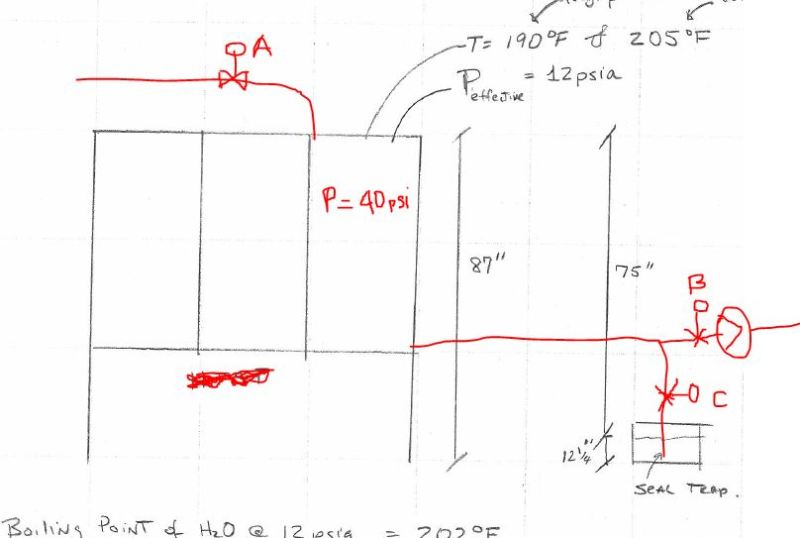Hi, I am working on a project to create a pressure differential in a plate and frame heat exchanger between the media and the product under static conditions. Please see attached image

The initial conditions on the media side is water at 190F, when the fluid that is being heated stops flowing, the idea is to close valves A and B, and open C to a seal tank creating a syphoning effect which will reduce the media pressure inside the heat exchanger to below atmospheric pressure.
The question is- If we have 190 F water at 40 psig, at a height of 75" from the seal tank, will the decompression of hot water from 40 psig --> 0 psig create nucleation vapor bubble near the seal tank's pipe that can break the syphoning effect and allow air to enter the heat exchanger? Will steam form towards the top of the heat exchanger due to this decompression effect since the pressure is lower at the top however the water is 10 degrees below boiling point.
Thank you

The initial conditions on the media side is water at 190F, when the fluid that is being heated stops flowing, the idea is to close valves A and B, and open C to a seal tank creating a syphoning effect which will reduce the media pressure inside the heat exchanger to below atmospheric pressure.
The question is- If we have 190 F water at 40 psig, at a height of 75" from the seal tank, will the decompression of hot water from 40 psig --> 0 psig create nucleation vapor bubble near the seal tank's pipe that can break the syphoning effect and allow air to enter the heat exchanger? Will steam form towards the top of the heat exchanger due to this decompression effect since the pressure is lower at the top however the water is 10 degrees below boiling point.
Thank you
